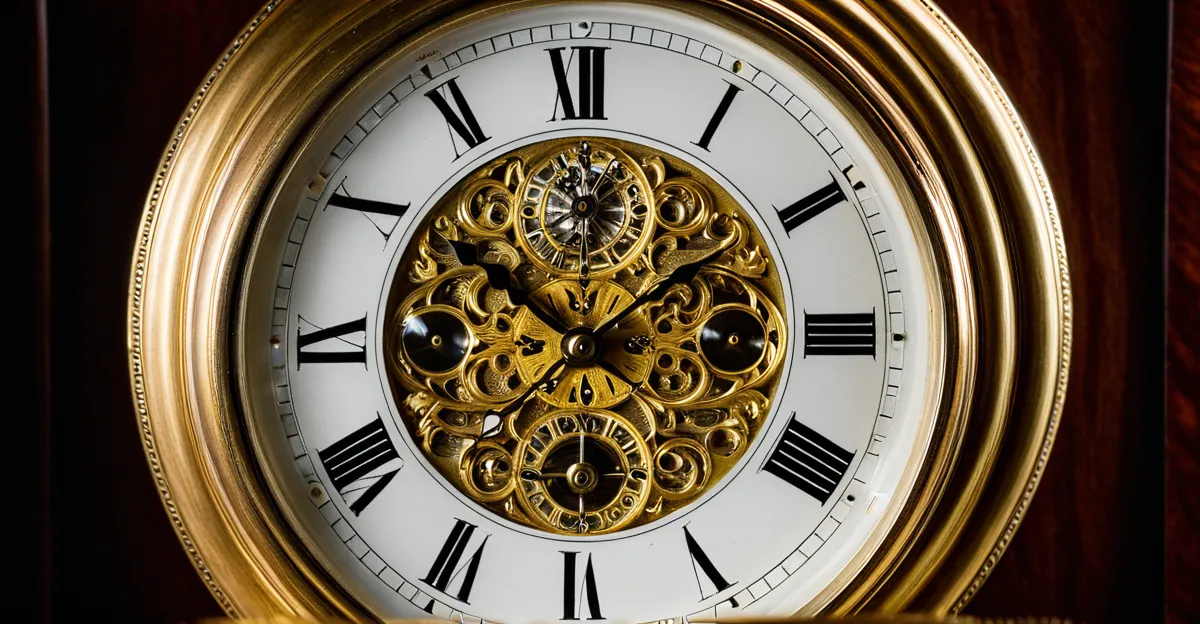Rare antique clocks captivate collectors by blending ingenious mechanics and exquisite artistry. These timepieces reveal centuries of craftsmanship, often signed by renowned makers, and carry stories from Georgian, Dutch, and Japanese heritage. Understanding their history, rarity, and intricate details helps buyers and sellers appreciate their true value beyond mere timekeeping.
Essential Guide to Identifying, Valuing, and Collecting Rare Antique Clocks
You can find further details about rare horological masterpieces on this page: https://www.lapendulerie.com/en/. Understanding rare antique clocks starts with recognizing the most important attributes: age, originality, craftsmanship, and the reputation of the maker. A clock often qualifies as rare and valuable when it is not only old—typically predating the mid-20th century—but also maintains original materials without heavy restoration. Notable makers or signed pieces command extra attention, as do models with innovative mechanisms or unique decorative styles.
Have you seen this : Unlocking illuminating solutions: expert guide to choosing ideal lighting for your windowless uk hallway
Verification of authenticity is critical. Look for clear maker’s marks or signatures—ideally, on both the case and the movement. The presence of matching serial numbers or identifiable marks tied to reputable makers adds confidence. Checking the originality of the dial, hands, and case materials helps uncover undocumented repairs or replacements that could affect value. Where doubts remain, consulting an experienced horologist helps confirm provenance, dating, and mechanical integrity.
Current rare clock valuation factors include not just the maker and age but also working condition, the quality of the movement, historical significance, and design. The most valuable vintage clocks—like Georgian urns or gilded Louis XVI astronomical timepieces—can reach prices upward of £80,000. Accurate pricing strategies depend on expert appraisal, recent auction results, and awareness of present-day collecting trends, balancing both sentimental and market value for collectors.
In parallel : Revitalize your uk study space with vintage map wall art: inspiring ideas for creative decor
Showcasing Historic Masterpieces: Recognized Types, Notable Makers, and Unique Designs
Hallmarks of Esteemed Antique Timepieces: Examples from the 17th to 19th Centuries
Rare mantel timepieces, unique carriage timekeepers, and collectible grandfather clock models often reflect the ingenuity and artistry of centuries past. Eminent examples, such as Georgian Urn Clocks or Charles II table clocks, highlight the rarity and value prized by collectors. These rare longcase clocks—especially Queen Anne Burr Walnut and Dutch Amsterdam burl walnut models—stand out for their distinct rare clock styles and designs, fusing luxurious materials with mechanical sophistication.
Characteristic Styles and Mechanisms
A foremost attribute among rare mantel timepieces and unique carriage timekeepers lies in their intricate rare clock mechanisms explained, featuring innovations such as quarter striking or eight-day spring-driven movements. The best rare clock case styles—ranging from flame mahogany to gilt-brass—are celebrated alongside rare clock dial designs and rare clock decoration styles, marking each timepiece as a testament to its period.
Celebrated Clockmakers and Their Lasting Influence
Prominent English, Dutch, French, and Japanese artisans shaped rare mantel timepieces and unique carriage timekeepers, setting enduring benchmarks for craftsmanship. Signed creations by Henry Jones or Breguet are recognized as top rare grandfather clocks and most coveted vintage clocks, while a focus on rare clock styles and designs ensures each remains not just a timekeeper, but a singular work of art.
Buying, Selling, and Caring for Rare Clocks: Expert Advice for Collectors and Investors
Where to Find and How to Acquire Authentic Rare Clocks: Dealers, Auctions, and Online Platforms
Collectors researching rare clock auction results can discover that vintage clock auctions and private dealers are often where the most sought-after timepieces appear. Auction houses publish rare clock auction results, revealing trends in what makes rare antique clocks desirable—often high-caliber makers, exceptional materials, and original mechanical movements. Dedicated dealers specializing in rare clock collections have networks for sourcing rare mantel timepieces, unique carriage timekeepers, or top rare grandfather clocks, all while adhering to strict antique clock authenticity checks. For digital convenience, the best places to buy rare clocks are established online platforms featuring rare clock dealer recommendations, verified rare longcase clocks, and rare mechanical clock movements with full provenance.
Preparing for Sale: Appraisal, Documentation, and Auction Insights
To maximize rare clock selling tips, an expert evaluation is essential. Professional appraisers assess rare clock valuation factors such as condition, rarity, and distinguished clockmakers’ maker marks. Documentation and provenance records secure higher rare clock auction results by giving buyers confidence in the authenticity of valuable vintage clocks. Many choose to sell via vintage clock auctions for broader exposure and robust price discovery.
Preservation and Restoration Best Practices: Maintenance and Value Retention
Preserving rare horological masterpieces demands diligent care for valuable antique clocks. Recommended vintage clock maintenance tips include gentle cleaning, keeping rare clock mechanisms explained by professionals, and regular servicing by restoration experts. Addressing only necessary repairs helps retain rare clock historical significance and maintains the rare clock value over time.


